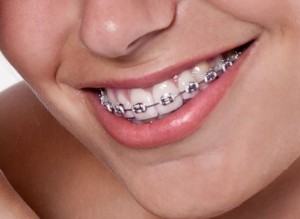Creating your Perfect Smile – June
 Gone are the days when orthodontic treatment was about heavy metal wires and brackets, hulky headgear and that unpopular “nerdy” look. Luckily, technology and design have come together, meaning that patients who need orthodontics to restore their dental health can now choose from a wide range of treatment options.
Gone are the days when orthodontic treatment was about heavy metal wires and brackets, hulky headgear and that unpopular “nerdy” look. Luckily, technology and design have come together, meaning that patients who need orthodontics to restore their dental health can now choose from a wide range of treatment options.
Available now are clear and tooth-colored brackets as well as rainbow-colored wires and elastic grips, all which make for virtually invisible or highly customizable appliances. Braces and retainers are no longer reserved for children, which mean that adolescents have a fresh option. And with new technology always comes questions, so here are the most frequently asked questions about orthodontics:
What exactly is Orthodontics?
Orthodontic treatment is a way of straightening or moving teeth to improve appearance.
Who needs orthodontic treatment?
People who have crowded or crooked teeth. Orthodontic treatment straightens the teeth and moves them into a better position. This improves teeth aesthetics and bites and will also make them easier to clean.
What orthodontic options are available?
- Invisible Braces: the Invisalign is a virtually unnoticeable system for straightening crooked teeth and closing the gaps be- tween teeth. Comfort, convenience and discretion are its major advantages. Invisible braces should be worn for 22 hours a day, removing only to eat and brush your teeth, and full treatment can last between six and 18 months.
- Inman Aligner: this orthodontic appliance straightens and moves your teeth. It’s an alternative to invisible braces but is not entirely clear. The Inman Aligner has a visible metal bar that shows across the front of the teeth and is not suitable for heavily crowded teeth.
- Lingual Braces: these custom-made fixed braces, bound to the back of the teeth, are invisible to others. Lingual braces help to correct a bad bite, gaps, crowding, and rotated teeth. They are not recommended for adults and teens who can wear braces on the front of their teeth, or people with very small teeth. As an orthodontic option they are more expensive than other choices.
- Traditional bands: Comprised of brackets and the main arch wire, brackets are fixed on the teeth and the arch wire is laced through the brackets.
How long will the treatment take?
From a few months to two and a half years. Most people can be treated in one to two years.
I hope that answers all your questions, but if you still need more information please come and consult our specialists. They will be able to diagnose your dental problem and prescribe the right treatment according to your needs and facial profile.
Keep smiling!
Jane Zhang, MD Dentist








